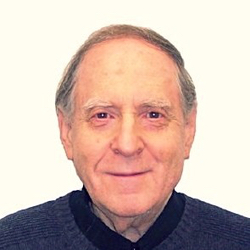NEW YORK’S BIG PARTY: A NATIVE VOICE AT THE TABLE
The Sullivan-Clinton Campaign of 1779 was the largest expedition ever before mounted against the Indians of North America. Deploying 5,100 to 6,200 troops - roughly 1/3 of the army! ‘ (without counting supply and support personnel) in the heat of the Revolution, George Washington’s aim is to forever crush Iroquois power and clear-cut the tribes from their ancestral New York homelands - one of earth’s most irrigated regions. He orders that they ‘not be merely overrun, but destroyed.’ And his generals, John Sullivan and James Clinton, don’t fail him. Although the Campaign now lies ‘off the radar’ in most American minds and classrooms, like nothing before, this juggernaut kicked open the door to American expansion across New York and points West. And while it did not end their armed resistance, Indian life in New York would never be the same.
This year, the Empire State will commemorate the Campaign’s 225th Anniversary. Its centerpiece ‘ the crown jewel of the summer’s ‘I Love New York’ upstate festivities - will be an on-site re-enactment of the Battle of Newton, August 27th - 29th. This was the Campaign’s early and decisive victory: as Yankee troops and cannon totally routed hundreds of badly outnumbered and out-gunned Iroquois and their English allies. After Newtown, Washington’s juggernaut put the torch to Iroquoia without opposition. By Sullivan’s official report, the Campaign burned 40 towns and their fields, at least 160,000 bushels of corn and a ‘vast quantity of vegetables of every kind’ ‘ the very basis of Iroquois life - turning ‘the whole of that beautiful region from the character of a garden to a scene of drear and sickening desolation.’ This, in the face of a record cold winter. ‘I flatter myself,’ Sullivan reported to Congress, ‘that the orders with which I was entrusted are fully executed, as we have not left a single settlement or field of corn in the in the country of the Five nations, nor is there the appearance of an Indian on this side of Niagara.’
The run-up to this year’s gala began last fall with the 225th Anniversary re-staging of the so-called Cherry Valley Massacre of November, 1778. Burning of the Valleys, a Revolutionary War re-enactment group, played out this bloody defeat of Yankee settlers and their garrison by a coalition of Loyalist neighbors, Iroquois warriors and English soldiers. Against all expectations, the event’s spokesperson began by telling the hundreds of assembled men, women and many children that ‘Whenever Indians won, it was called a ‘Massacre;’ but whenever white folks won, it was called a ‘Battle.’’ He also confided that Cherry Valley must be seen as part of a bloody cycle of violence: the tit-for-tat revenge for a prior American attack on the Indian village of Oquaga. In 1778, however, the attacks on Wyoming by the Senecas (3 July) and on Cherry Valley by the Mohawks (11 November) were widely publicized as massacres. This, in turn, handed Washington the pretext to launch the unprecedented Sullivan-Clinton Campaign in 1779. Its financing had already been allocated by Congress since June 11, 1778 ‘ this before the Cherry Valley and Wyoming “massacres” took place.
Soon after attending Cherry Valley, I sought a native voice to weigh in on what Sullivan-Clinton has meant to Indians. And on how Indians might participate in the upcoming Commemoration, if at all. Peter Jemison ‘ a Seneca artist, activist and spokesperson ‘ was willing to share his views. Jemison currently serves as Historical Site Manager for Ganondagan - a striking 650-acre former Seneca site (at Victor, New York) devoted to public education and cultural preservation of the Iroquois legacy. In 1687, the site was torched by 3,200 French troops, some 92 years before Sullivan-Clinton.
Jemison grew up on the Seneca Cattaraugus reservation and is an 8th generation descendant of Mary Jemison, the famous once-captured Scotish-Irish woman who lived most of her life as a Seneca. Mary left a remarkable account of her life that includes eyewitness experiences of the Sullivan-Clinton Campaign. What follows is excerpted from a longer interview and carries the seeds of Peter Jemison’s still-evolving response’.
© All rights reserved, 2004, 2006

